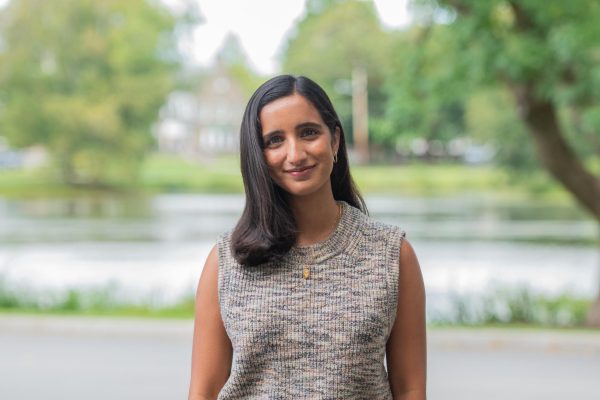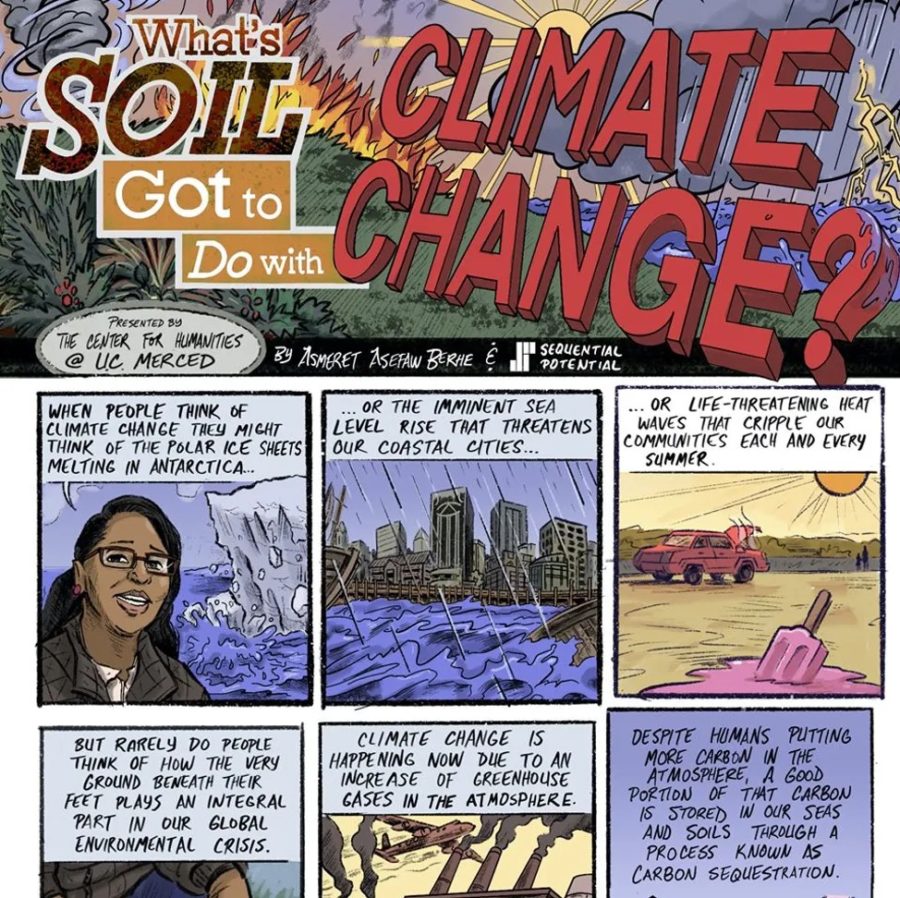Professor Asmeret Asefaw Berhe on the Role of Soil in Climate Change
As part of the NASC Colloquium, Professor Asmeret Asefaw Berhe joined the Colgate community on Zoom in an event entitled: “What’s Soil Got To Do With Climate Change?” on April 9. According to Assistant Professor of Geology Joe Levy, who was responsible for coordinating the event, the talk was part of the Colloquium Series from the Natural Sciences and Mathematics Division. The division brings in six to seven speakers from both Colgate and other places in the country to share their research with Colgate.
“It’s a way to help bring even more cutting-edge science to campus and to see it presented in a broadly engaging presentation,” Levy said.
Berhe is a soil biogeochemistry professor at the University of California, Merced, the Falasco Chair in Earth Sciences at the Department of Life and Environmental Sciences as well as the Interim Associate Dean of the Graduate Division. Highlighting three major aspects in her presentation: background, soils and climate change and climate change mitigation, Berhe began by discussing her work with soil, explaining that she studies it both as a resource as well as how it reacts and deals with climate. She explained that soils are natural bodies that have special properties resulting from a combination of five variables, including climate, living matter, parent material, relief and time. Berhe stressed the importance of soil as “a vital resource” and spent a lot of time expanding on the carbon and organic matter that’s a part of the soil. Often employing the term SOM (Soil Organic Matter) in her presentation (the part of the soil that includes biological, chemical and physical properties), Berhe explained that soil is resilient, and the matter that makes it up helps it deal with the climate around it and different changes in nature that might affect it.
The talk then moved into the titular topic of Soils and Climate Change. This part of the lecture started off with a startling statistic: human actions are responsible for releasing 9.4 billion tons of Carbon; while Berhe acknowledged that only about half of the carbon we release remains in the atmosphere, she pointed out that the rest of these emissions become sequestered on land and in the ocean. Through this, Berhe argued that while the conversation around climate change largely revolves around the greenhouse gases that we release into the atmosphere, in reality, “The natural ecosystems are basically bailing us out.”
Berhe believes that whatever consequences we are facing right now is only half of the climate change that we are ultimately causing. The lecture went on to say that because of how we have been using land, we have lost about 120 petagrams of carbon in the past 200 years due to degradation of the soil system. Berhe went on to say that, despite the dismal research, the current trend can be reversed, using soil to combat climate change rather than feed into it. This led to the last section of the presentation: Climate Change Mitigation.
In the last leg of the lecture, Berhe focused on the role of working lands, and how working lands can either be a part of the problem or the solution to climate change. Berhe’s main points were that, in order to stop climate change, there needs to be a reduction of emissions and an increase in negative emissions to pull Carbon Dioxide out of the atmosphere.
“If we can achieve that … then we have a real potential not just to slow down … but bend the curve towards something more sustainable,” Berhe said,
Berhe explained that land management is a major part of how we can help the environment, and there are a variety of options for how this can be implemented: restoring histosols (organic soils in wetlands and similar ecosystems), rice management, restoring degraded land, water management, cropland management and more.
When asked what he found to be the most interesting part of the lecture, Professor Levy replied:
“The neatest thing I learned from the talk was how many different ways humans could better manage soils to help draw down carbon dioxide from the atmosphere. Managing soils smarter is an important tool for fighting climate change.”
During the Q&A part of the event, Berhe was asked about what people can do to help with carbon storage and have a positive impact on the environment.
“We need to have an impact at all levels at this point,” Berhe said.
She stressed influencing policy and an “all hands on deck” approach. On a more personal level, Berhe explained that anything from reducing emissions with transportation, home services, and farming, can help. Additionally, not using and relying on products that destroy the environment is also helpful towards effective climate change.
While soil may not be considered by all people when discussing climate change, Professor Berhe’s lecture to the science community at Colgate provided an interesting and thoughtful perspective into how soil and climate change are related.

Maya Karkhanis is a senior from Hillsborough, NJ concentrating in international relations, religion, and Asian studies. She has previously served as an...






